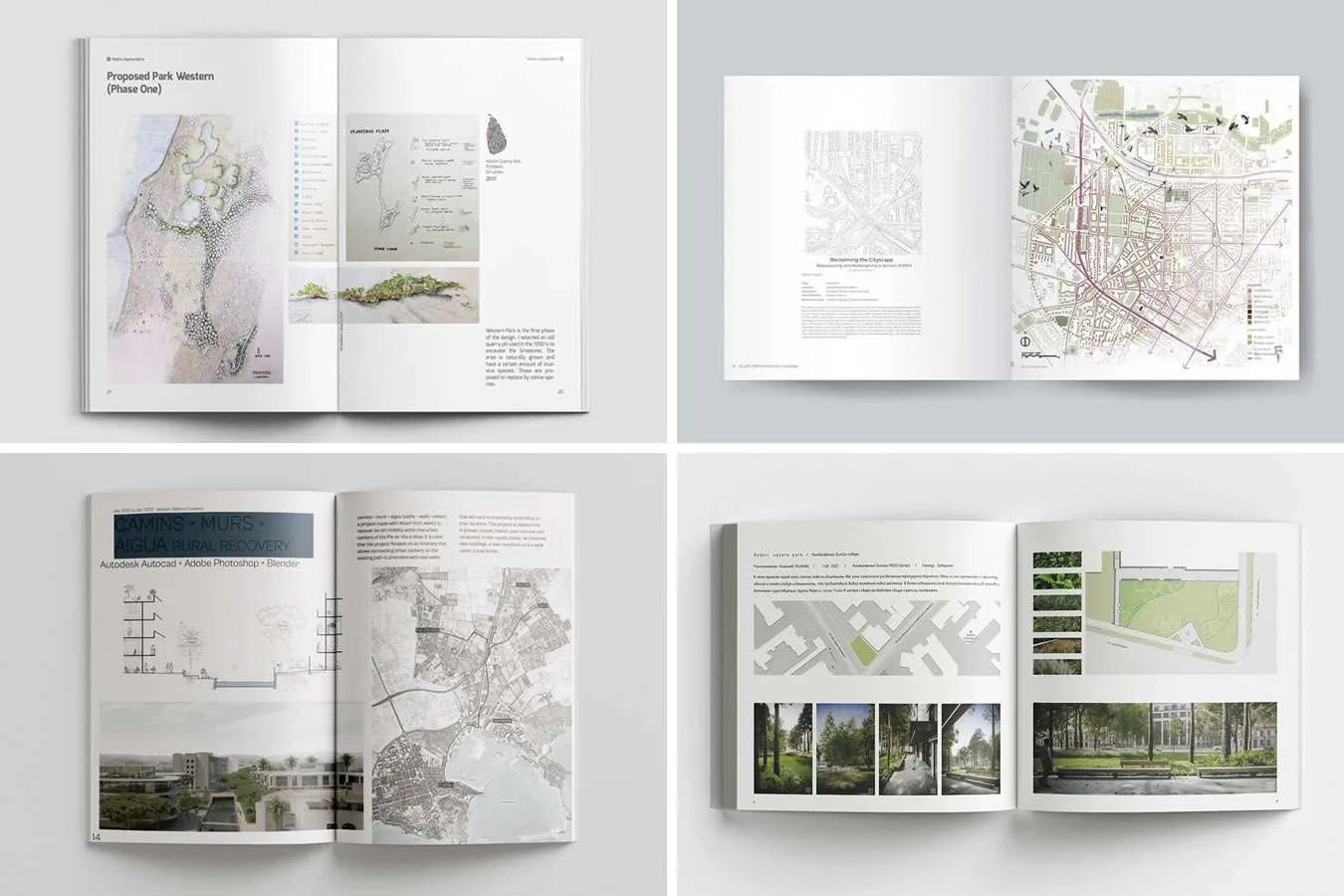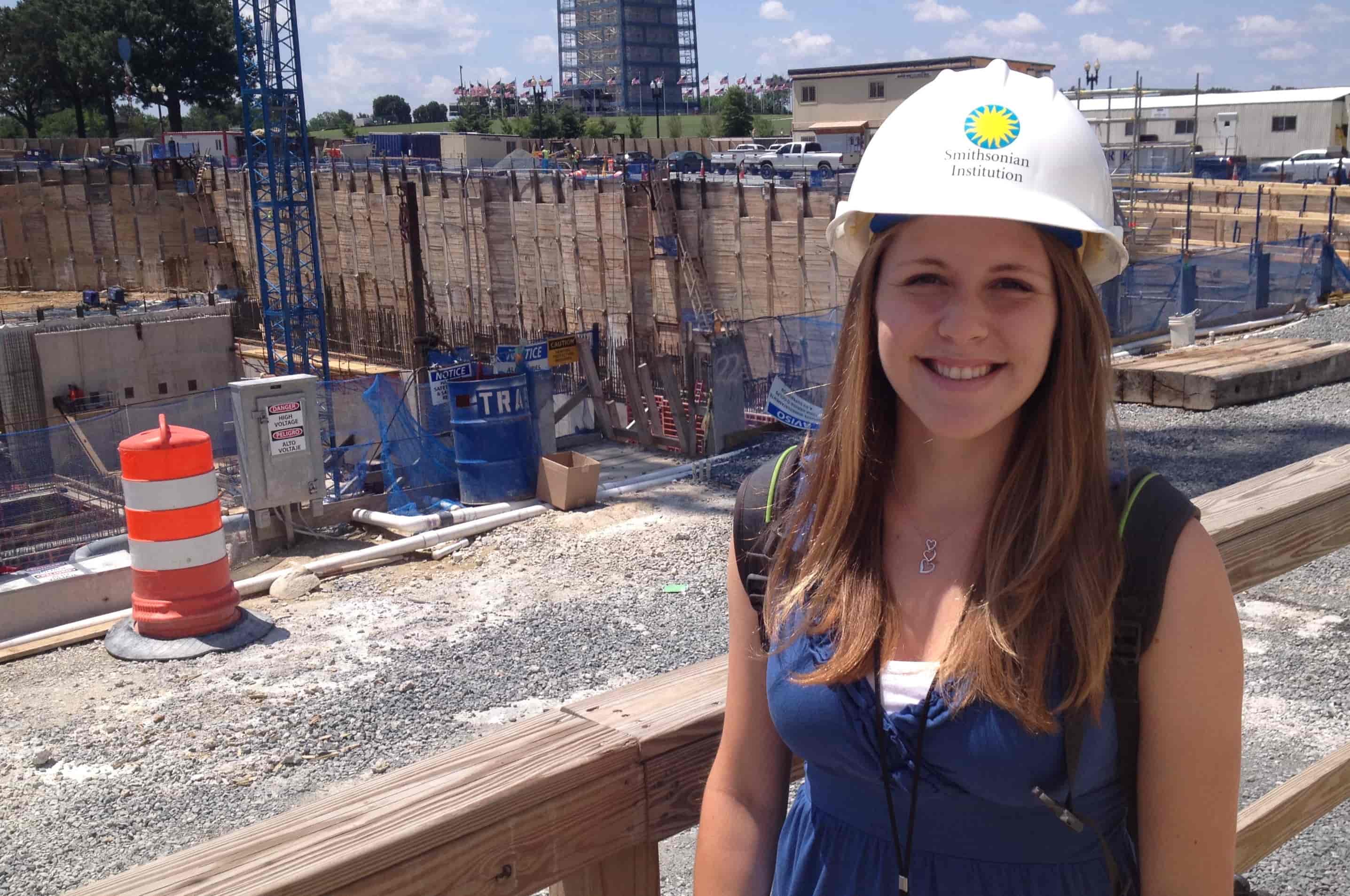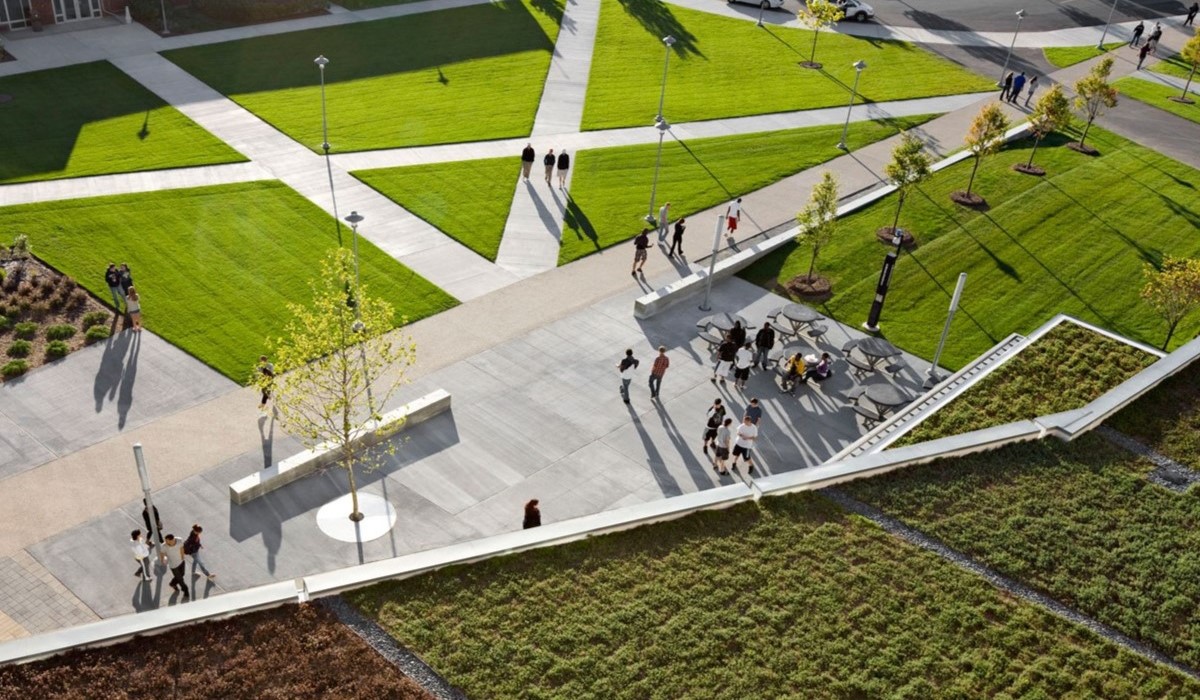Home>diy>Planning & Engineering>How Hard Is It For A Landscape Architect To Find Work


Planning & Engineering
How Hard Is It For A Landscape Architect To Find Work
Modified: February 25, 2024
Looking for work as a landscape architect? Discover the challenges and opportunities in the planning and engineering field.
(Many of the links in this article redirect to a specific reviewed product. Your purchase of these products through affiliate links helps to generate commission for Storables.com, at no extra cost. Learn more)
Introduction
The field of landscape architecture is both rewarding and challenging. As a landscape architect, the ability to create outdoor spaces that are not only aesthetically pleasing but also functional and sustainable is paramount. However, finding work in this competitive industry can be a daunting task.
With a deep understanding of planning and engineering principles, landscape architects play a crucial role in designing and constructing outdoor environments that enhance the quality of life for individuals and communities. They work on a wide range of projects, including parks, gardens, urban landscapes, and even infrastructure projects like highways and airports.
In recent years, the demand for landscape architects has been on the rise due to the growing recognition of the importance of sustainable design and the increasing need for green spaces in urban areas. However, despite the increasing demand, finding work as a landscape architect can still be challenging. In this article, we will explore some of the factors that affect job opportunities for landscape architects and provide strategies for navigating the job search process.
Key Takeaways:
- Landscape architects face challenges in finding work due to competition, experience requirements, and geographical constraints. Building a strong portfolio, networking, and staying adaptable are crucial for success in this competitive field.
- Practical experience, networking, and continuous skill improvement are essential for landscape architects to navigate the job market effectively. Overcoming challenges and staying resilient can lead to fulfilling opportunities in the industry.
Read more: How To Find A Landscape Architect
Overview of the landscape architecture industry
The landscape architecture industry encompasses a wide range of professionals who are dedicated to designing and creating outdoor spaces that are aesthetically appealing, functional, and sustainable. Landscape architects work in both the public and private sectors, collaborating with architects, engineers, urban planners, and other professionals to transform landscapes into beautiful and functional environments.
One of the key roles of landscape architects is to understand the natural and cultural context of a site and integrate it into the design. They consider factors such as climate, topography, available resources, and the needs of the community to create designs that are visually stunning and environmentally responsible.
Landscape architects utilize a variety of skills and techniques in their work. They are proficient in site analysis, master planning, 3D modeling, and the use of landscaping software. They also possess a deep knowledge of horticulture, ecology, and sustainability principles to create designs that are not only visually appealing but also environmentally friendly.
The projects undertaken by landscape architects can vary significantly in scale and complexity. They may design private gardens, public parks, waterfront developments, corporate campuses, or even large-scale urban planning projects. Their work involves collaborating with clients, stakeholders, and other professionals, including contractors and construction teams, to bring their designs to life.
The landscape architecture industry is influenced by various trends and factors. With the growing awareness of the impact of climate change, there is an increased emphasis on designing resilient and sustainable landscapes. Urbanization and population growth also present opportunities for landscape architects to create green spaces that improve the quality of life in cities.
Additionally, advancements in technology have greatly influenced the landscape architecture industry. Computer-aided design (CAD) software and 3D modeling tools have made it easier for landscape architects to visualize and communicate their designs. Furthermore, the use of sustainable materials and innovative construction techniques has become increasingly important in the field.
Overall, the landscape architecture industry is a dynamic field that requires a blend of creativity, technical expertise, and environmental consciousness. Landscape architects have the opportunity to shape the world around us, creating beautiful and sustainable outdoor spaces that enhance our daily lives.
Factors affecting job opportunities for landscape architects
While the demand for landscape architects is steadily growing, there are several factors that can impact job opportunities in the industry. Understanding these factors can help aspiring landscape architects navigate the job market effectively. Here are some key factors to consider:
- Economic conditions: The state of the economy plays a significant role in job opportunities for landscape architects. During times of economic downturn, there may be a decrease in construction and development projects, which can limit job prospects. Conversely, during periods of economic growth, there may be an increase in construction projects and urban development, leading to more job opportunities.
- Regional and local demand: The demand for landscape architects can vary by region and locality. Urban areas often have a greater need for landscape architects due to the concentration of development projects and the need for green spaces. Rural areas may have fewer opportunities, but there may be a demand for landscape architects in projects related to rural landscape restoration or conservation.
- Government policies and regulations: Government policies and regulations related to land use, environmental protection, and urban planning can have a significant impact on job opportunities for landscape architects. Changes in policies or the introduction of new regulations can create new job prospects, especially in areas such as sustainable design, green infrastructure, and urban revitalization.
- Emerging trends and technologies: Keeping up with emerging trends and technologies in the field is essential for landscape architects. The industry is constantly evolving, and professionals who stay updated on the latest design techniques, software, and sustainable practices have a competitive advantage in the job market. Employers may prioritize candidates who have expertise in areas such as green infrastructure, urban agriculture, and resilient design.
- Experience and portfolio: Experience plays a crucial role in the landscape architecture industry. Employers often look for candidates with a proven track record and a diverse portfolio that showcases their past projects. Landscape architects can enhance their job prospects by gaining experience through internships, volunteering, or working on small-scale projects to develop their skills and build a portfolio.
- Networking and professional connections: Networking is important in any industry, and landscape architecture is no exception. Building professional connections through industry events, conferences, and online platforms can help landscape architects learn about job opportunities, collaborations, and trends. Networking can also lead to recommendations and referrals, increasing the chances of finding employment.
It is important for landscape architects to be proactive in seeking out job opportunities and staying informed about industry trends. By considering these factors and tailoring their approaches accordingly, landscape architects can increase their chances of finding rewarding and fulfilling employment in the field.
Importance of experience and portfolio
Experience and a strong portfolio are crucial for landscape architects when it comes to finding work and advancing in their careers. While education and knowledge are important, it is the practical application of skills and the ability to showcase past work that truly sets landscape architects apart. Here are some reasons why experience and a portfolio are key:
- Demonstrates skills and capabilities: A portfolio provides tangible evidence of a landscape architect’s abilities. It showcases their design skills, creativity, and technical expertise. Employers and clients can assess the quality of their work, the diversity of projects undertaken, and their ability to handle different challenges. Experience in handling various types of projects, such as residential landscapes, urban parks, or commercial developments, demonstrates a landscape architect’s versatility and adaptability.
- Builds credibility and trust: A landscape architect with a solid portfolio and relevant experience instills confidence in clients and employers. It validates their capabilities and expertise, making them more attractive candidates for job opportunities. A robust portfolio can serve as a testament to the landscape architect’s professionalism and ability to deliver results.
- Highlights problem-solving abilities: Landscape architecture is a problem-solving profession, and experience allows landscape architects to hone their problem-solving skills. Through their past projects, landscape architects can demonstrate their ability to analyze site constraints, understand client requirements, and develop creative solutions. A portfolio showcases their ability to address complex challenges and find innovative design solutions.
- Reflects industry knowledge and trends: The landscape architecture industry is constantly evolving, and experience allows professionals to stay updated on the latest trends, techniques, and design practices. By including current and relevant projects in their portfolio, landscape architects can showcase their knowledge of emerging concepts such as sustainable design, green infrastructure, or urban rehabilitation. This knowledge can give them a competitive edge when seeking job opportunities.
- Creates networking and collaboration opportunities: Building a portfolio requires working on projects with various stakeholders, including architects, engineers, and clients. Through these collaborations, landscape architects can develop professional connections and networks. These connections can lead to new job opportunities, recommendations, and partnerships in the future. A strong portfolio can be a powerful networking tool that facilitates professional growth.
In the landscape architecture field, experience and a portfolio are indispensable assets. They provide landscape architects with a platform to showcase their skills, build credibility, and demonstrate their problem-solving abilities. By continuously adding to their portfolio and seeking meaningful experiences, landscape architects can enhance their career prospects and make a lasting impact in the industry.
Networking is key for landscape architects to find work. Join professional organizations, attend industry events, and connect with potential clients and employers to increase your chances of finding job opportunities.
Networking and professional connections
In the landscape architecture industry, networking and building professional connections are crucial for career growth and job opportunities. While landscape architects need technical skills and a strong portfolio, forming connections with industry professionals can open doors to collaborations, referrals, and new job prospects. Here’s why networking is important and some strategies to build professional connections:
- Access to hidden opportunities: Many job opportunities in the landscape architecture field are not advertised publicly. Instead, they are often filled through word-of-mouth or recommendations from trusted connections. By developing a strong network, landscape architects can gain insider information about job openings that may not be accessible through traditional channels.
- Learning from industry experts: Networking provides an opportunity to connect with experienced professionals, mentors, and industry leaders. Engaging in conversations with these individuals can offer valuable insights, advice, and knowledge about the industry. They can provide guidance on career development, industry trends, and strategies for professional success.
- Collaborative opportunities: Building a network opens doors to collaboration with other professionals in related fields, such as architects, urban planners, and engineers. Collaborating on projects not only enhances the quality of work but also leads to cross-referrals and new opportunities through the extended network of colleagues and collaborators.
- Professional support and resources: Networking can provide a support system for landscape architects. Being part of a professional community allows individuals to share resources, information, and best practices. This can include sharing design tools, industry research, job postings, or even advice on navigating the challenges of the profession.
- Building a personal brand: Networking allows landscape architects to showcase their work, skills, and expertise to a wider audience. Attending industry events, participating in conferences or workshops, and engaging in online platforms can help landscape architects establish their personal brand and create a professional reputation in the field.
- Community involvement and advocacy: Networking extends beyond professional connections—it also encompasses engagement with the broader community. Getting involved in local organizations, volunteering for environmental initiatives, or participating in public meetings related to landscape architecture can help landscape architects make meaningful connections, create awareness about the profession, and advocate for the value of well-designed landscapes.
To build professional connections and network effectively, landscape architects can employ several strategies. Attending industry conferences, joining professional organizations like the American Society of Landscape Architects (ASLA), participating in online forums and social media groups, and reaching out to colleagues for informational interviews are effective ways to start building connections. Taking part in local community events, volunteering for relevant causes, and engaging with design professionals through mentorship programs can also facilitate networking opportunities.
Overall, networking and building professional connections are essential for landscape architects to expand their career opportunities, gain valuable insights from industry experts, and establish themselves within the profession. By actively engaging in networking activities, landscape architects can open doors to exciting opportunities and form lasting relationships that contribute to their long-term success.
Read more: What Is Hard Landscaping
Job search strategies for landscape architects
Searching for a job as a landscape architect can be a challenging process, but with a strategic approach, it is possible to navigate the job market effectively. Here are some key job search strategies that can help landscape architects land their desired positions:
- Develop a targeted job search plan: Before starting the job search, it is crucial to define your career goals and aspirations. Research different sectors within landscape architecture, such as residential, commercial, or public projects, and identify the specific types of organizations or firms you want to work for. This will help you focus your job search efforts and tailor your applications to the desired positions.
- Create a standout resume and cover letter: Your resume and cover letter are your first impressions on potential employers. Tailor your resume to highlight relevant experiences, skills, and qualifications that match the job requirements. Use specific examples to demonstrate your achievements and include a well-crafted cover letter that addresses the employer’s needs and explains why you are a good fit for the position.
- Build a strong online presence: In today’s digital age, having an online presence is essential for job seekers. Create a professional LinkedIn profile and optimize it with keywords relevant to landscape architecture. Showcase your portfolio, skills, and experiences on platforms like Behance or personal websites. Stay active on industry forums, engage with professional groups, and share relevant content to expand your network and increase visibility among potential employers.
- Utilize professional networks and resources: Tap into professional networks like the American Society of Landscape Architects (ASLA), attend industry events, and join online forums to connect with fellow professionals and stay updated on job opportunities. Explore job boards specific to landscape architecture, such as the ASLA job board or specialized websites like Land8. Leverage your connections, seek referrals, and ask for informational interviews to learn more about potential job openings.
- Gain practical experience through internships or volunteering: Practical experience is valuable for entry-level landscape architects. Seek internship opportunities at firms or organizations to gain hands-on experience and build your portfolio. Volunteering for community projects or participating in design competitions can also help you showcase your skills, network with professionals, and open doors to potential job opportunities.
- Prepare for interviews and showcase your portfolio: Practice common interview questions and prepare compelling examples that highlight your skills and experiences. Research the company or organization beforehand to demonstrate your interest and knowledge. Be prepared to showcase your portfolio during the interview, highlighting your best work and explaining the design process and outcomes. A well-presented portfolio can make a lasting impression on potential employers.
- Continuously improve and update your skills: The landscape architecture field is constantly evolving, with new technologies, design trends, and sustainability practices emerging. Stay updated with the latest tools, software, and industry trends. Consider taking continuing education courses, attending workshops, or pursuing professional certifications to enhance your skills and make yourself more marketable.
Finding a job as a landscape architect requires a proactive and targeted approach. By developing a job search plan, optimizing your resume and online presence, networking effectively, gaining practical experience, and continuously improving your skills, you can increase your chances of finding the right job opportunity and embarking on a successful career in landscape architecture.
Challenges faced by landscape architects in finding work
While the field of landscape architecture offers exciting opportunities, there are certain challenges that landscape architects may encounter when searching for work. Understanding these challenges can help prepare individuals and navigate the job market more effectively. Here are some common challenges faced by landscape architects:
- Competition: The landscape architecture industry is highly competitive, with a limited number of job openings compared to the number of qualified professionals seeking work. This can make it challenging for landscape architects, especially those who are entry-level or have less experience, to stand out among a sea of applicants.
- Experience requirements: Many job postings require a minimum level of experience, which can make it difficult for recent graduates or individuals transitioning into the field to find opportunities. This catch-22 situation can be frustrating, as it can be challenging to gain experience without first securing a job.
- Location constraints: Job opportunities in landscape architecture can be geographically concentrated in certain areas, particularly urban centers. This can pose challenges for landscape architects who are not located in these areas or are seeking work in specific regions. Relocating may be necessary to access more job opportunities.
- Project availability and timing: The availability of landscape architecture projects can fluctuate based on economic conditions, government funding, and market demand. This can result in periods of limited job opportunities or delays in project timelines, which can disrupt career progression and job search plans.
- Narrow job market focus: The landscape architecture field covers a broad range of disciplines, including residential design, urban planning, ecological restoration, and more. However, job opportunities may be more concentrated within specific sectors or project types. Individuals with a niche focus or those seeking work outside of popular sectors may face challenges in finding suitable positions.
- Client preferences and budget constraints: Clients often have specific preferences or limitations that can impact the scope and nature of landscape architecture projects. This can influence the availability of job opportunities and the types of projects available. Budget constraints may also limit the number and scale of projects, resulting in fewer opportunities for landscape architects.
- Changing industry dynamics: The landscape architecture industry is constantly evolving. Advancements in technology, construction practices, and sustainability requirements can impact industry dynamics and create new challenges. Staying updated on these changes and adapting to new trends can be crucial in finding work.
Despite these challenges, landscape architects can overcome them by being proactive, flexible, and creative in their job search strategies. Networking, building a strong portfolio, gaining practical experience, and continuously improving skills can help enhance competitiveness and increase chances of success in finding meaningful work.
It is important for landscape architects to stay resilient and persistent in their job search. Embracing professional development opportunities, considering freelance or contract work, and seeking mentorship can also provide alternative pathways to gain experience and access job opportunities. By staying adaptable and proactive, landscape architects can overcome challenges and find fulfilling work in the field.
Conclusion
The landscape architecture industry offers a wealth of opportunities for professionals passionate about creating beautiful and sustainable outdoor spaces. However, finding work in this competitive field can be challenging. By understanding the factors affecting job opportunities and implementing effective job search strategies, landscape architects can increase their chances of success.
Experience and a strong portfolio are vital in showcasing skills, building credibility, and demonstrating problem-solving abilities. Landscape architects should prioritize gaining practical experience through internships, volunteering, and small-scale projects to enhance their portfolios. Additionally, networking and building professional connections play a crucial role in accessing hidden job opportunities, learning from industry experts, and creating collaborative opportunities.
However, landscape architects also face challenges in their job search, such as intense competition, experience requirements, and geographical constraints. Adapting to changing industry dynamics and staying updated on the latest trends and technologies is essential to remain competitive and increase job prospects.
Despite the obstacles, landscape architects should remain resilient and proactive. Developing a targeted job search plan, creating a standout resume and cover letter, and building an online presence through platforms like LinkedIn can help in the job search process. Continuously improving skills, staying connected with professional networks, and being open to alternative pathways, such as freelance or contract work, can create new opportunities as well.
In conclusion, finding work as a landscape architect requires a combination of technical skills, experience, networking, and adaptability. By understanding the industry, building a strong portfolio, leveraging professional networks, and embracing challenges, landscape architects can thrive in their careers and contribute to the creation of beautiful and sustainable outdoor environments.
Frequently Asked Questions about How Hard Is It For A Landscape Architect To Find Work
Was this page helpful?
At Storables.com, we guarantee accurate and reliable information. Our content, validated by Expert Board Contributors, is crafted following stringent Editorial Policies. We're committed to providing you with well-researched, expert-backed insights for all your informational needs.















0 thoughts on “How Hard Is It For A Landscape Architect To Find Work”